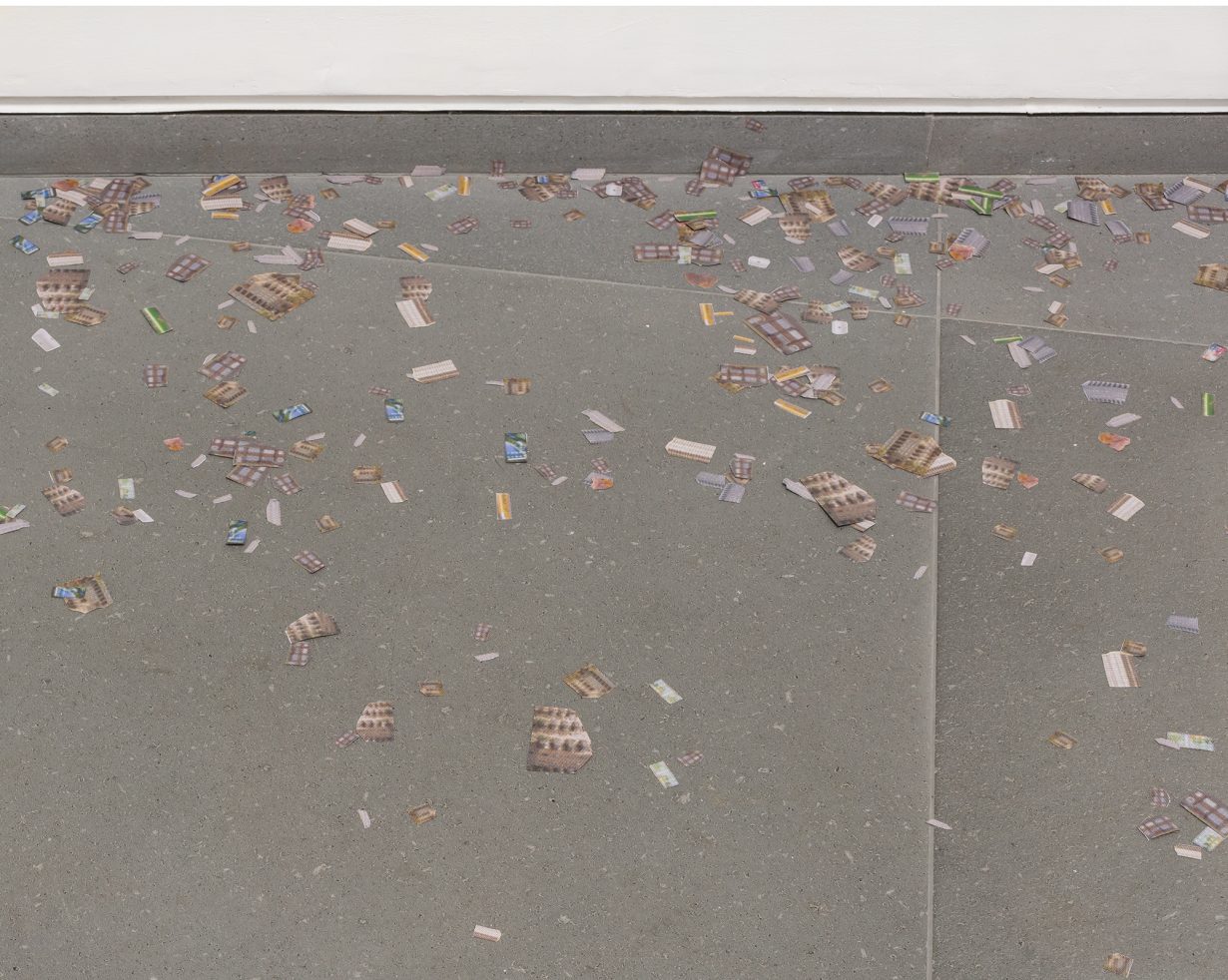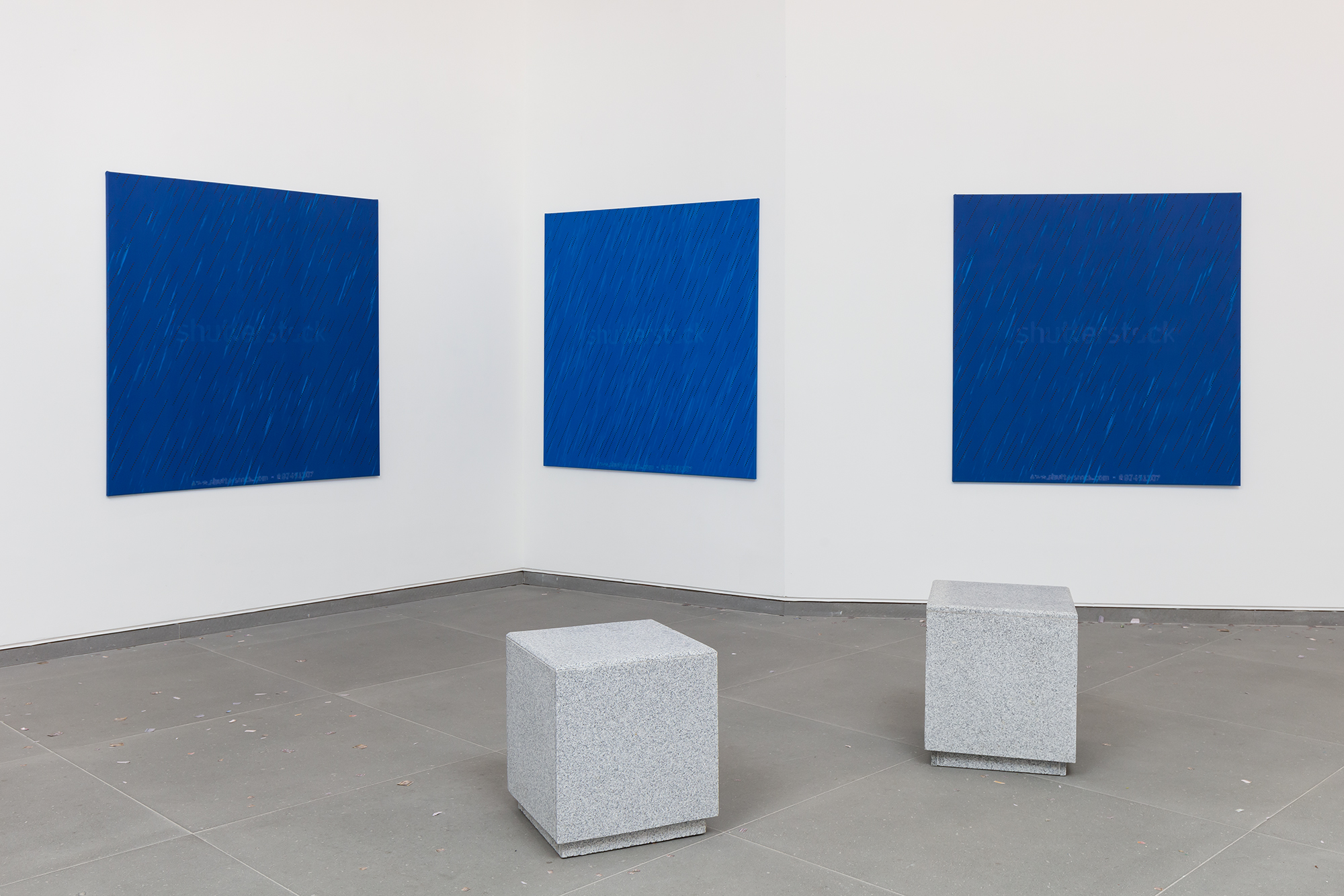The Cascades Plus at Cabinet, London abstracts our experience of urban environments, but its ephemerality conceals more sombre implications
Above head-height on the wall of London’s Cabinet gallery, a painting by the artist Gili Tal seems familiar. Its regular chequerboard of pinks, greys, washed reds and browns evoke abstract painter Stanley Whitney’s colour fields, or a Valentine’s Day colour-scheme chart – but if you squint, it’s probably a big red London bus. Check the gallery handout. Buses (Diffuse Glow) (2024). Bingo.
The idea running through Tal’s The Cascades Plus at Cabinet is to extract and abstract aspects of urban environments – here most visibly London itself – in order to see them anew. Nine inkjet prints in the 2020 series Windows (Rainscreen Wash), each in varying shades of blue with rainlike cascading dashes, are evenly arranged throughout Cabinet’s irregular decagon exhibition space like false panes. Printed identically onto each is the Shutterstock photography company watermark. Nice gag. Three granite bollards dot the space, with that bland uniformity shared by both public redevelopment projects and Minecraft blocks. Look around them, and the floor is speckled with penny-size pieces of cutout paper. On these you can variously make tiny images of a smartphone screen, a block of flats or a sweet wrapper. This artwork as detritus gathers along the walls of the gallery as if leaf-blown into a corner, kicked along by the public’s feet or scattered by the gust from, say, a passing bus.

It’s not the first time Tal has projected the more arbitrary elements of urban life onto the rarified gallery space: photographs of its shops, benches, clocks and odd corners each printed onto office vertical roller blinds appeared in Civic Virtues at Cabinet in 2018, while architectural photographs stretched over large standing whiteboards featured throughout Mastering the Nikon D750 at Zürich’s ETH Hönggerberg in 2019. All through these, Tal jabs at the value – and valuation – of an artwork. (Comparisons to Peter Fischli & David Weiss are not unwarranted.)
So Tal’s show is playful and quintessentially cool, yet this ephemerality and lightness of touch conceals more sombre implications. Tal’s recent focus is on the contemporary aesthetics of city planning, architectural gentrification and newbuild design – known for being cheap, quick, mass-producible and replicable by private leaseholders. Oliver Corino’s introduction to the show, too, likens the appearance of the nine Rainscreen Wash prints to ‘the aluminium cladding styles of numerous contemporary facades’, often deployed as a superficial mask to ‘ugly’ or now-unseemly buildings. In extracting this masking object, Tal pulls the techniques of such architecture into the private gallery, replicating its creeping, flattening influence on urban life. It’s a deft feat of associative mapping. Yet we still feel something that is missing, omitted – the fundamental political stakes of any city: people, whose lives are shaped by the physical structures Tal renders a ghost town. In fact, desertion is perhaps the exhibition’s hallmark: the shrapnel prints littered, rubble, literal ‘throwaway’ works; unmovable granite slabs; nine stock images, still watermarked and ‘unbought’. If this is how we must view our metropolis, then maybe it’s time to catch the next bus.
The Cascades Plus at Cabinet, London, through 25 January
From the January & February 2025 issue of ArtReview – get your copy.
